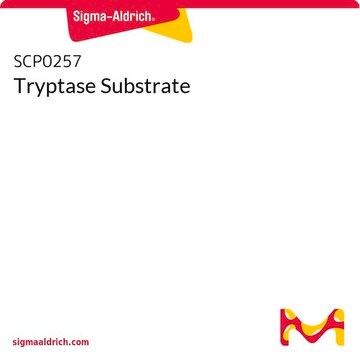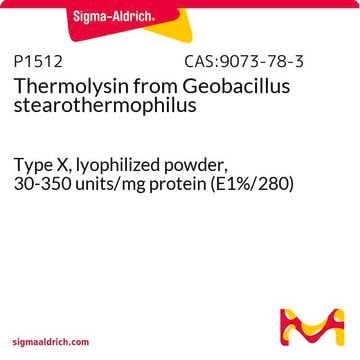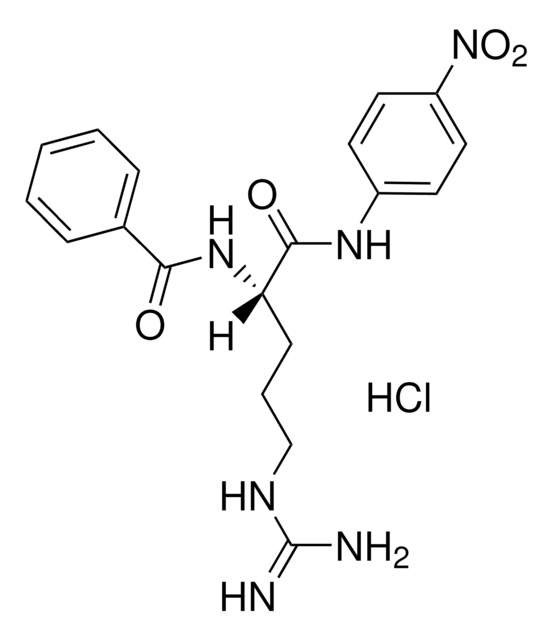The extinction coefficient (E1%) of product T7063, Tryptase from human lung, is 30.3 when measured at 280 nm wavelength.
T7063
Tryptase from human lung
buffered aqueous solution, ≥5 units/mg protein
Synonyme(s) :
Tryptase enzyme
About This Item
Produits recommandés
Forme
buffered aqueous solution
Niveau de qualité
Activité spécifique
≥5 units/mg protein
Poids mol.
~135 kDa
Conditions d'expédition
dry ice
Température de stockage
−20°C
Informations sur le gène
human ... TPSAB1(7177) , TPSB2(64499) , TPSD1(23430) , TPSG1(25823)
Description générale
Application
Actions biochimiques/physiologiques
Tryptase is released from the mast cell as a result of the degranulation response during anaphylaxis. In addition, several tryptase genes and alleles (α, β, γ & δ) have been identified in various tissues and circulating in blood. Pro-β-tryptase is thought to be the constituative circulating form in blood.
The biological function of tryptase is unknown. However it has been reported to catalyze the activation of complement C3, convert prostromelysin to stromelysin (MMP-3), and cleave fibrinogen resulting in a loss of clottting potential. Tryptase also degrades fibronectin, calcitonin gene-related peptide, vasoactive intestinal peptide,
and kininogen.
Qualité
Propriétés physiques
Définition de l'unité
Forme physique
Code de la classe de stockage
12 - Non Combustible Liquids
Classe de danger pour l'eau (WGK)
WGK 1
Point d'éclair (°F)
Not applicable
Point d'éclair (°C)
Not applicable
Faites votre choix parmi les versions les plus récentes :
Déjà en possession de ce produit ?
Retrouvez la documentation relative aux produits que vous avez récemment achetés dans la Bibliothèque de documents.
Les clients ont également consulté
-
What is the extinction coefficient (E1%) of product T7063, Tryptase from human lung?
1 answer-
Helpful?
-
-
What is the Department of Transportation shipping information for this product?
1 answer-
Transportation information can be found in Section 14 of the product's (M)SDS.To access the shipping information for this material, use the link on the product detail page for the product.
Helpful?
-
Active Filters
Notre équipe de scientifiques dispose d'une expérience dans tous les secteurs de la recherche, notamment en sciences de la vie, science des matériaux, synthèse chimique, chromatographie, analyse et dans de nombreux autres domaines..
Contacter notre Service technique












